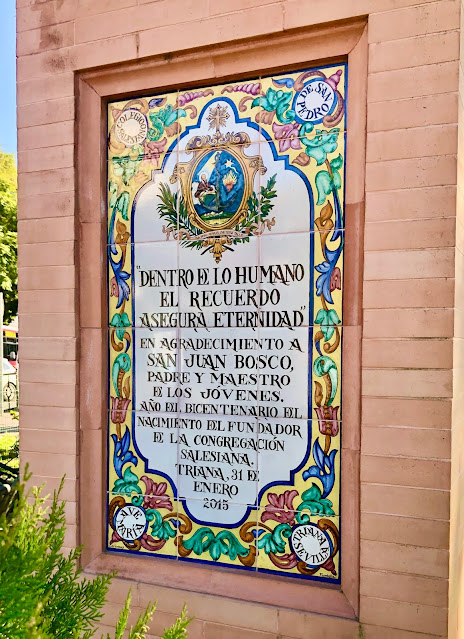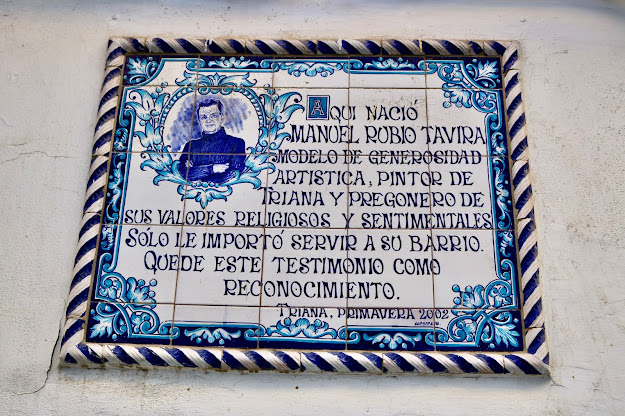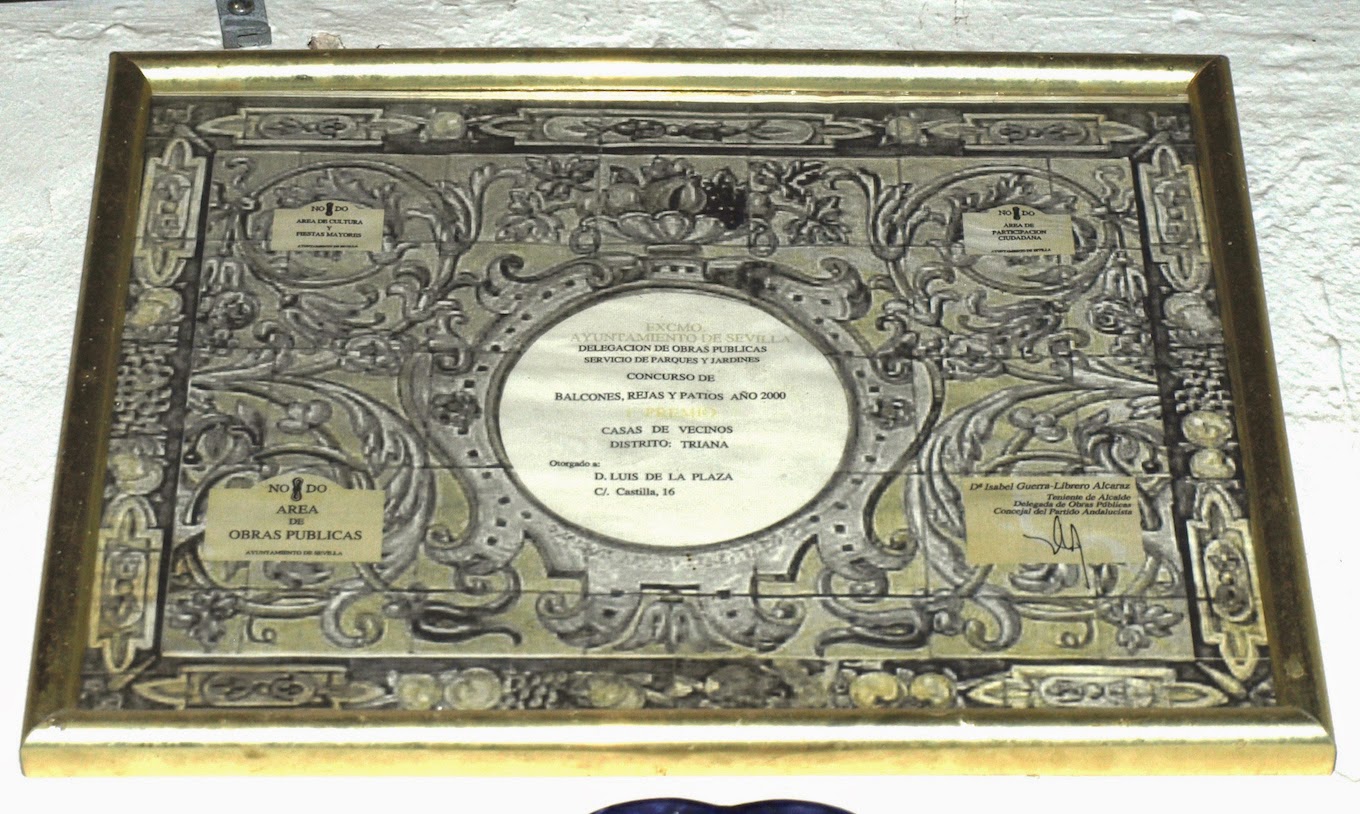A la derecha de la puerta de entrada a la Capilla de los Marineros, en la trianera Calle Pureza, podemos ver este mármol donde se indica el hermanamiento histórico que los barrios de Triana de Sevilla y Las Palmas de Gran Canaria han tenido durante cinco siglos.
La Triana sevillana la conoceos todos, sin embargo, la Triana canaria es una desconocida para casi todos.
El barrio de Triana, muy cerca del puerto de la Luz, ha supuesto una constante histórica en la evolución de Las Palmas de Gran Canaria, casi desde el mismo instante en que tuvo su origen el primer núcleo de población de la ciudad, a partir del último tercio del siglo XV.
Dice la historia que la elección del nombre de Triana por parte de sus antiguos habitantes tiene relación con el trianero barrio de Sevilla, dado el importante aporte poblacional andaluz que arribó a Canarias en los primeros momentos tras la conquista.
Hoy lo único que ha quedado para el recuerdo de su ambiente marinero es la Ermita de San Telmo, originariamente construida a principios del siglo XVI.
La ermita actual fue construida en siglo XVIII. En su interior, además de su artesonado mudéjar y el retablo, merecen contemplarse la "Inmaculada" atribuida a Alonso Cano.
At the right of the door of the Chapel of the Sailors, in the Pureza Street, we can see this marble where is indicated the historical brotherhood that Triana's neighborhoods of Seville and Triana's neighborhoods of Las Palmas de Gran Canaria have had for five centuries.
The Sevillian Triana you know well, nevertheless, the Canary Triana is a stranger for almost all the people.
Triana's neighborhood, very near of the Puerto de la Luz, has supposed a historical constant in the evolution of Las Palmas de Gran Canaria, almost from the origin of population of the city, from the last third of the 15th century.
History says that the choice of Triana's name on the part of his former inhabitants has relation with the Triana´s neighborhood of Seville, in view of the important population Andalusian that arrived to Canaries Islands in the first moments after the conquest.
Today the only thing that has stayed for the recollection of its seaworthy environment is San Telmo's Hermitage, originally constructed at the beginning of the 16th century.
The current hermitage was constructed in 18th century. Inside, besides its muslim ceiling and the altarpiece, theri is a sculpture of the "Inmaculate Conception" attributed to Alonso Cano.





































.JPG)
.JPG)
.JPG)

.JPG)








